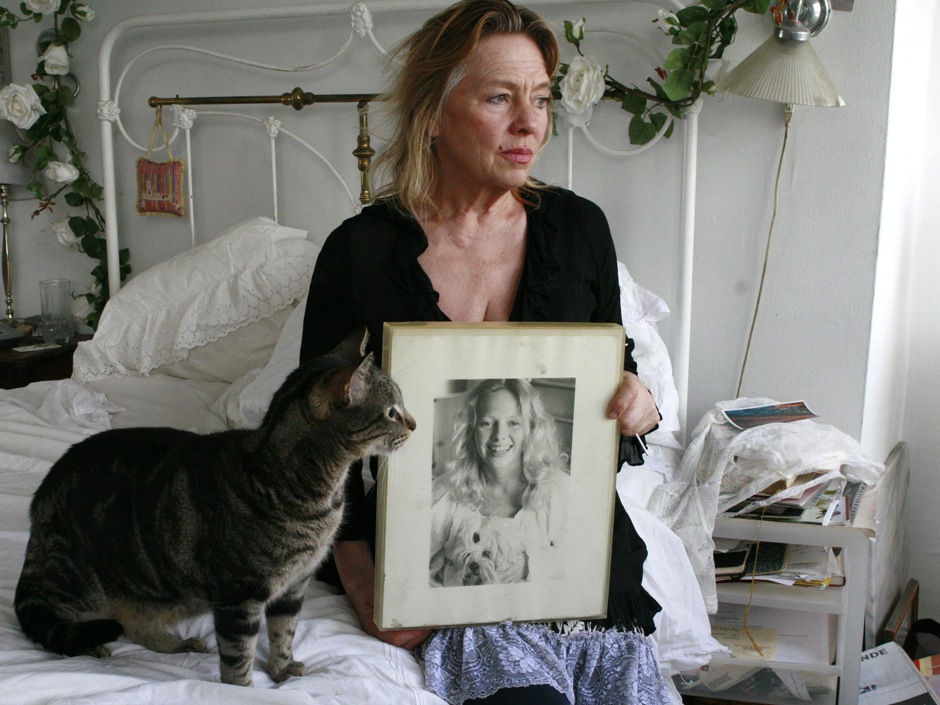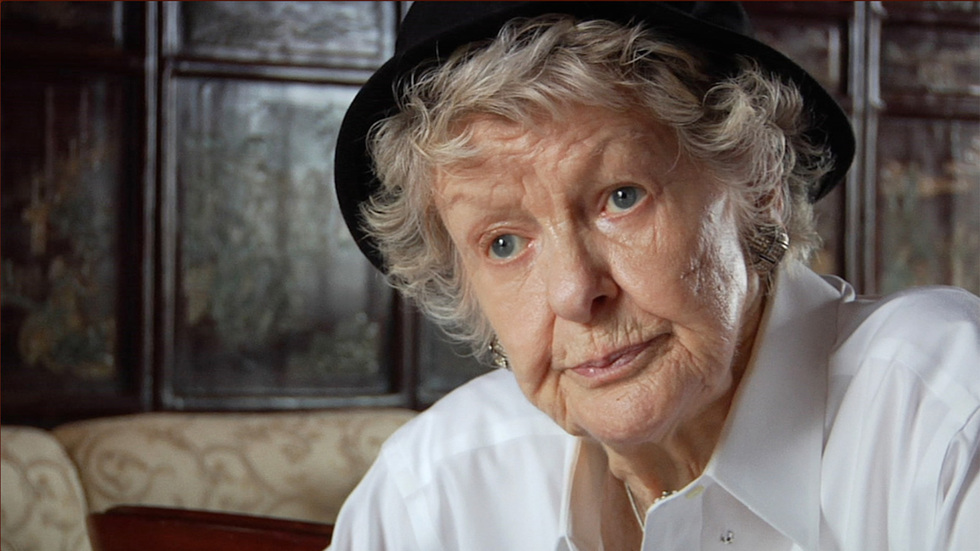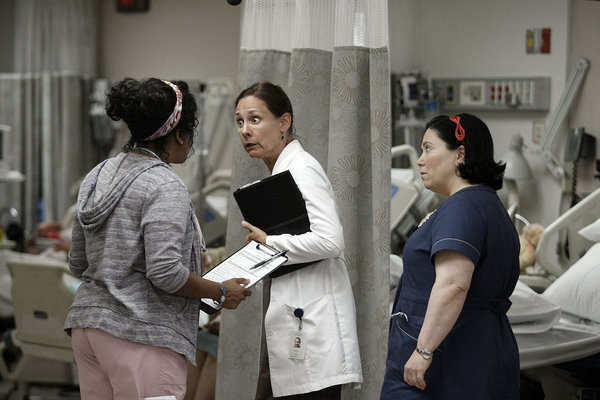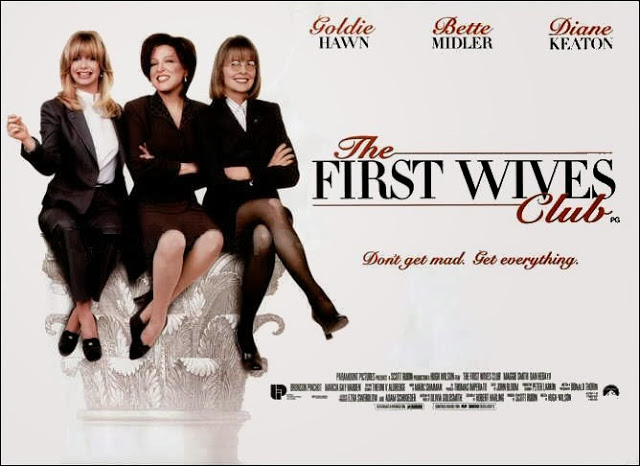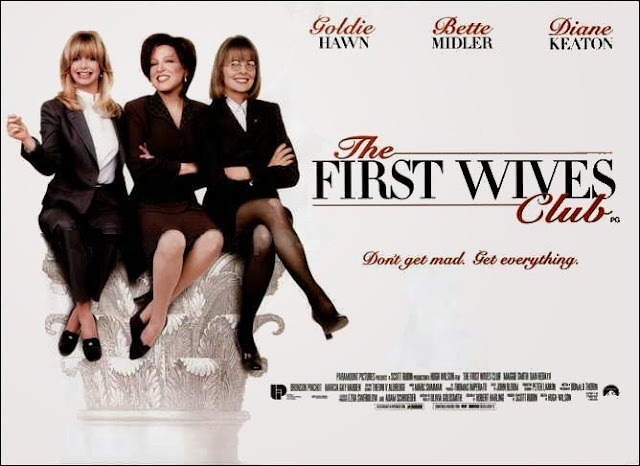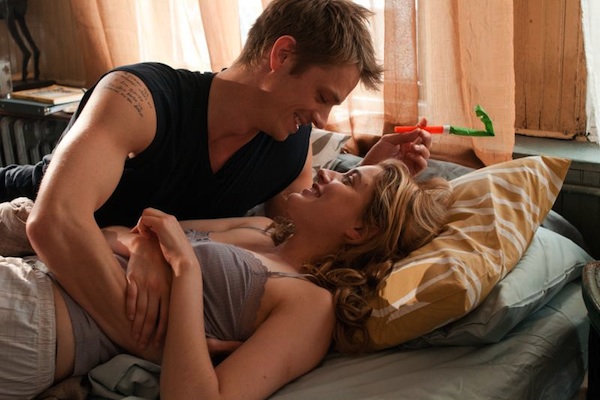This guest post written by Leena van Deventer appears as part of our theme week on Bisexual Representation.
Advancing women’s representation in film and television is without a doubt a noble cause, as is improving the representation of many different marginalized groups. Our media should reflect the community the story is about, and our communities are full of people of different genders, races, ages, sizes, and sexual orientations. Failure to do so can contribute to the greater erasure, dehumanization, and intentional ignorance of a marginalized group’s existence, which can have devastating effects on marginalized folks in our society.
Cheers can be heard all through the internet every time a new movie is announced with a strong female character as the lead role. But those roles have changed over the last 20 or so years, and if we’re concerned with raising a generation of girls readying themselves for the coming feminist revolution, we need to consider whether we’re doing them a disservice by holding up this combat and conflict-driven Lone Wolf Badass as Finally The Female Character That Will Deliver Us From Evil and Seize the Means of Production While Looking Fabulous.
When I look back at the movies I held dear as a teen (no judgment okay), I’m reminded of The Craft, Thelma and Louise, Sister Act (1 & 2), A League of Their Own, Now and Then, or Steel Magnolias. A common thread through all of these stories was that of women’s friendship. These women knew they would live and die for each other; they knew they were better off together than alone. This has probably subconsciously affected my feminist practice, and influenced how much Molly Lambert’s article, “Can’t Be Tamed: A Manifesto,” resonated with me on a molecular level. It’s a tool of the patriarchy to convince women that women are their own worst enemies and can’t get along; it’s a radical act to actively push against that and love harder than you ever have before.
Imagine how much more Hermione Granger could have achieved if she had a Thelma to her Louise? A smart or brave or rough best friend who would do anything for her? What about Katniss Everdeen or Bella from Twilight? Who would they spend Galentine’s Day with? Who would die to protect her? While it’s inspiring to see badass women, like Rey, Furiosa, or possibly even a new Rocketeer (which is exciting as the sequel will star a Black woman), it’s easy to see the narrative being easily hijacked from women’s collective advancement to one of insular capitalist bootstrapping, a narrative which broadly prioritizes men (and stereotypically masculine qualities) over women. We shouldn’t be leaving a trail of bodies behind us, we should be amassing an army along the way.
The modern tale of female friendship I was looking for popped up in an unexpected place, to minimal fanfare, and has now officially taken up residence in a permanently rent-controlled corner of my heart. Netflix’s Grace and Frankie is a tale of female friendship and strength, with season two recently dropping and a third season on its way. It’s a tale of two septuagenarian women being bound together by adversity to find the good in each other and potentially resign to the fact that they may be the last great loves of their lives.
The first season introduced the main characters: Robert and Grace Hanson (played by Martin Sheen and Jane Fonda), and Sol and Frankie Bergstein (played by Sam Waterson and Lily Tomlin). These couples were brought together by Sol and Robert working together as partners in their law firm, and as such, both families spent a lot of time together over their 40 years of marriage, including their now adult children, who all have cousin-esque relationships with each other for the most part. They bought a shared beach house, which after Sol and Robert come clean that they have in fact been in love with each other for the last half of their marriages, becomes the primary residence of the now-displaced wives, Grace and Frankie.
Season one had many saccharine moments that I have no doubt turned a lot of people off continuing to watch, but Season two doesn’t make that same mistake. It’s sharper, wittier, and we get to see more of what makes these women tick. They know each other’s routines and quirks now, after living together for so long, and they’ve grown more fond of each other. What was once a one-dimensional joke about a control freak, push-your-feelings-down, Type A woman living with a pot-smoking, tie-dye wearing, hippie (Ho ho! The odd couple! What hijinks will ensue?) has now become less about how different the two women are and more about how they can parlay their respective strengths and weaknesses into finding a way to be there for each other no matter what.
Grace and Frankie understand the importance of banding together, and we see this in the episode where Grace catches up with some snooty country club friends after not being in contact since the break-up. The women scoff at what it must be like to live with a strange eccentric like Frankie, and Grace reminds them that she’s the only person who understands what this situation feels like, and the only person who reached out to help her, before telling them they’re assholes and leaving to go hang out with Frankie instead. The second season is underscored by a commitment between these two women; they will be there for each other to the end.
It’s thrilling for me to experience the stories of these women. As a 31-year-old woman, I cannot possibly comprehend what it would be like to lose a friend I’d loved deeply for 40 years. I was yelping and hooting and hollering at the closing scene, as Grace and Frankie walk in slow motion out of the house, onward to their new sex-toy-making empire that markets vibrators to older women (dishwasher-safe with large font instructions and comfortable grips to compensate for arthritis). We don’t hear these stories about older people enough.
What makes it even more exciting to me, as a queer woman, is that not only are we being treated to these stories of our elders but that queerness is acknowledged and exists amongst older people in this television series. Homophobia is so often linked with being old-fashioned; more prolific in previous generations. Queer stories of our elders are crucially important to our history, a sentiment further impressed upon me at the recent screening of Winter and Westbeth, a stunning and uplifting documentary about queer older people and the rich, full lives they led as artists in public housing in New York’s West Village. We need more older characters on-screen, especially LGBTQ people and people of color.
While we may be coming in leaps and bounds in terms of LGBTQ representation, I fear we still have a long way to go for equal acceptance for the “B” (and definitely the “T”) portions of that acronym. My one bone to pick with Grace and Frankie, for all of my true and deep love, is the decision to make Sol and Robert come out as being gay after 40 years of consummated, loving marriage to their wives. Surely, there was a possibility they were in fact bisexual? Was it because gay is easier for audiences to understand than “those confusing bisexuals”? Bisexual erasure frequently occurs in media and is common even within our own activist circles. People (even prominent LGBTQ activists) make biphobic comments about how bisexual teens are just confused; or bi people are promiscuous, greedy, and can’t be monogamous; or the very tired quip, “Bisexuality is just a truck stop on the road to gay,” as if bisexuality doesn’t exist and people must choose. So I can understand how difficult it can be for us who are bisexual to have some issues with representation when we struggle with representation in our very own dedicated spaces.
With a lack of bisexual characters in film and television and damaging tropes about bi people in media, it would have been great to see two bi men in Grace and Frankie, especially two older men. Bi men characters and queer characters who are older are both rarely depicted in film and television.
Because I do love the show so much, perhaps I would like to imagine the decision to make Sol and Robert gay as opposed to bisexual is because of the history of the (undeserving, cruel) association between bisexual people and infidelity, given that the men in this show engaged in a 20-year affair with each other. Perhaps co-creators Marta Kauffman (who has absolutely managed to inject more heart into this show than previous works such as Friends) and Howard J. Morris wanted to avoid contributing to that damaging stereotype? But that’s probably being too kind.
We have a long way to go with representation of all kinds: race, gender, age, size, disability, sexuality. We can get better at advancing this cause by being critical of the things we love. We can write as many strong female characters as we like in the hopes it will advance feminism, but a lone wolf isn’t going to get much done. We also need more female characters who aren’t just young, cis, straight, white women. We need to inspire girls by showing them inclusive representation and the power of women’s friendship, and we need to show them that those women can be of any age, and that strength isn’t always about picking up a bow or aiming the crosshairs at the bad guys. Sometimes it’s about holding your best friend’s hand while you do something scary.
Leena van Deventer is a game developer, writer, and educator from Melbourne, Australia. She has taught interactive storytelling at RMIT and Swinburne Universities and is co-author of Game Changers: From Minecraft to Misogyny, the Fight for the Future of Videogames with Dan Golding for Affirm Press. You can find her on Twitter @LeenaVanD.





